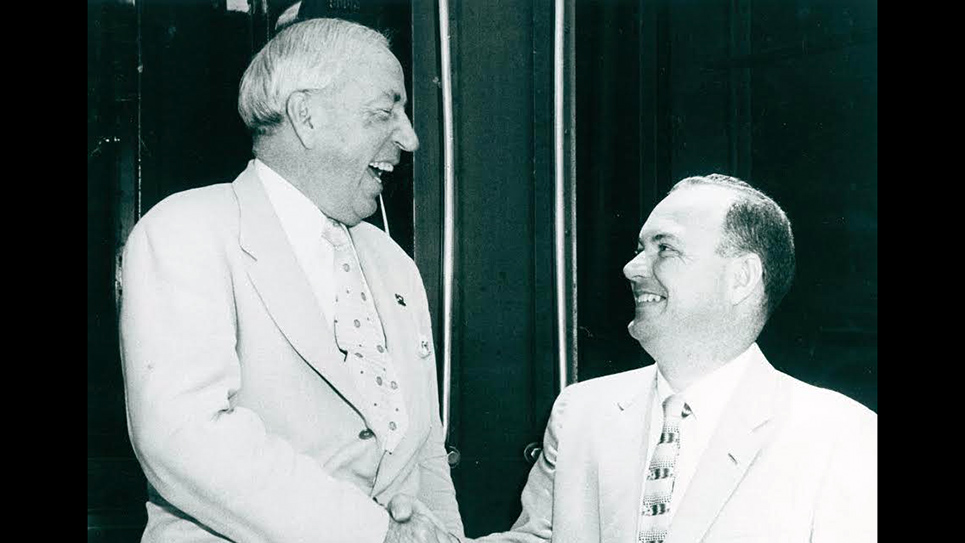“You look good, Dr. Ferguson,” a patient recently told me. She then asked, “How do you feel?” Perhaps the latter was just a pleasantry of conversation – something we all do. None of us really expects or wants to hear about another person’s aches and pains – sometimes even doctors tune out.
Though English is my native language, my grade school teachers were never able to convince me of the importance of studying a language I’d already “mastered.” I am more of a grammarian than I used to be. Perhaps this is why I no longer awaken in a panic having dreamed I was to be tested on the Harbrace English textbook! I did notice that my friend and patient used vernacular phrasing in complimenting me on my appearance. It would have been impolite though and downright catty to tell her she had incorrectly used the adjective good instead of the modifying adverb, well. So I just thanked her for the compliment and said, “I’m doing fine.” You be the judge from the recent picture above.
A weeks ago I saw a friend who has gone through the “valley of the shadow of death” due to cancer, radiation and chemotherapy. It was her sallow complexion which told me of her journey. Doctors are trained to notice such things, but I believe all of us intuitively recognize a rosy, healthy complexion, and one that is not.
Body language is often more telling than our verbiage, at least for those of us who are sighted. The fictional Superman was said to have X-ray vision. What pubescent boy has not fantasized similarly! More telling was Jesus’ ability to see into the heart of a man and his motives. I believe the Master’s ability was more than just the honed skills of observation and more than Bobby Drinnon’s skills of “seeing” through empathy.
I have two friends who lost their vision as adults and now work with young blind people to teach them the characteristic body mannerisms of the sighted. During conversation, sighted people receive nuanced information beyond words. As an example, every man knows when he’s said something wrong; his wife’s reaction is more telling than any vocal disapproval. My friends who are blind have learned to listen more carefully. Too often during conversation I don’t listen carefully because I’m busy thinking of something to say or just trying to avoid a social faux pas. My friends amaze me with their listening skills and their conversational mannerisms as they “look” directly at me.
When I was in medical school my peers and I often played a game of observation to hone our clinical skills. In a non malicious way we would observe the public and suggest diagnoses. A more recent example is the man who almost fell on me at the Pops concert while descending stairs in the semi-darkness. His shortened, festinating (hurrying) gait, reduced arm swing and tremor led me to the diagnosis of Parkinson’s Disease. I couldn’t see his facial expression, but I’m sure it would have been masklike, as is typical in this neurodegenerative disorder.
I’ve always been interested in clinical diagnostic skills. You often need these skills in the middle of the night or in the central highlands of Guatemala where CT scans aren’t available. Even non doctors draw conclusions from their observations, sometimes asking my opinion of their diagnosis.
I’m especially interested in gait issues in my geriatric patients where falling is a big problem. Gait issues are also on my mind as I watch my granddaughter Josie learn to walk. You can see her working to develop the neural connections in her cerebellum which will one day produce fluid and coordinated movements. Pathologically, stroke patients can have similar discoordinated movements and coarse shaking as Josie now manifests due to her immature brain.
This essay is not meant to make you a neurologist or even an internist who once stayed in a Holiday Inn Express. However, if you see someone unable to easily get up from a chair, especially if they must use their arms to push themselves to a standing position, you should assume these folks are at high risk of a fall due to weakness in their quadriceps (thigh muscles). Similarly, weakness of those muscles on the back of the thigh (hamstrings) which ease us down into a chair also raise the risk of a fall. Older folks sometimes find walking painful and therefore become more sedentary. This contributes to weakening of the thigh muscles which must be resisted. Use those muscles or lose them is good advice.
We’ve all seen people with “inner ear” problems who seem to veer off course. Obviously, this can be dangerous. And others with nerve damage may find it difficult to raise their feet and compensate with a high stepping gait in order to prevent tripping. Throw rugs in a home add warmth and are beautiful, but can contribute to falls in folks with muscular and neurologic disorders.
An important and common problem in older folks is what I call disequilibrium syndrome (dysfunction of equilibrium). Patients often report that they’re unsteady or dizzy, but this is not vertigo. As we age the collection and transmission of sensory information becomes impaired. Our hearing decreases, the sense of smell and taste diminish and our vision weakens. Often many of us need bifocals later in life and sometimes trifocals. When you first put on bifocals you understand lack of depth perception and how disconcerting and problematic this can be. Lastly, some older folks have difficulty sensing their toes, and compensate by watching where they step. People with neuropathy often lean forward to watch their step, lifting their feet higher as they walk. Watching their difficulties is even unsettling for me.
Strokes cause additional gait issues beyond just the paresis which contributes to falls. Patients may have spasticity where their toes turn inwards and scrape the floor producing excessive wear of the tips of shoes. Stoke victims may also have an inability to adequately lift the affected leg producing an audible scuffing of the floor and a visible widened compensatory swinging of the leg called circumduction. Obviously, these debilities increase the risk of falls.
Broken hips, a fractured pelvis or crushed lumbar vertebrae can be life threatening and cause misery. You’ve heard that appearances can be deceiving, but they can also be revealing. Let’s pay attention and do a better job looking after each other and protecting the frailest among us.






